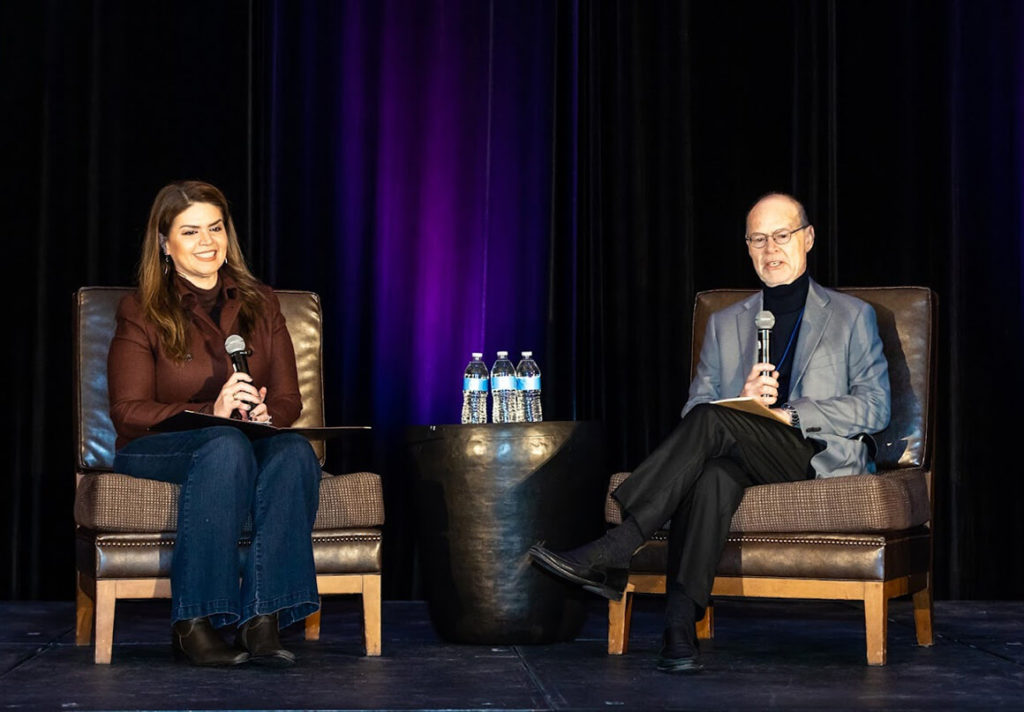Last month, I attended the International Economic Development Council (IEDC) 2023 Leadership Summit held in Tucson, Arizona, January 29 to 31. Perhaps the most memorable aspect of the event was getting to spend time with former clients, new clients, and colleagues from all over North America. The list is too long to name everyone, but the in-person connections and conversations are a huge benefit to IEDC’s conferences.
Here are some observations I took away from my time in Tucson.
1. Climate change and economic development are intertwined.
The most well-attended portion of the conference was Monday morning’s plenary session which featured a fireside chat between TIP managing partner Jon Roberts and Tucson Mayor Regina Romero on the topic of climate action and economic development. The interactive dialogue highlighted what Tucson is doing through its Climate Action Plan, its comprehensive economic development strategy (CEDS), and other City-led efforts that link climate resilience and economic opportunities. Mayor Romero talked about how the City has adopted the view of climate change as a public health hazard that worsens existing social inequities and about the growing pressure from investors for companies to prioritize sustainability. Public-private collaborations like the Tucson Million Trees Initiative, which aims to plant one million trees to help mitigate the effects of climate change, illustrate the City’s embrace of climate action built around this new market reality. I came away from the session feeling optimistic and inspired by Mayor Romero’s forward-looking and pro-business attitude toward climate action.
2. IEDC continues to make equity a top priority.
Last year, TIP was honored to work with the first cohort of communities participating in the IEDC’s Equitable Economic Development Playbook Program. Launched in 2022 by the Racism and Economic Development Committee, the program provides technical assistance to communities looking to address diversity, equity, and inclusion. Over a seven-month period, our team worked with five economic development organizations tackling equity across areas ranging from workforce development and neighborhood revitalization to procurement and real estate development. As part of the preparation of equity action plans, our team facilitated one-on-one sessions, held office hours, hosted peer learning opportunities, and provided a framework for implementation. At the Leadership Summit in Tucson, TIP’s Tracye McDaniel, Jon Roberts, and Mishka Parkins were on hand to help support the launch of the 2023 cohort, comprised of community development financial institutions. During the two-day orientation session, they led a series of workshops designed to help each organization discover its unique equity challenges, identify critical stakeholders in the equity planning process, and lay the groundwork for the remainder of the engagement.
3. The space race is heating up!
The race is on, but Monday’s panel on The Future of Space Travel and Economic Development made clear that it’s not only countries like the US and China that have outer space ambitions. The competitive landscape has intensified alongside an increase in private sector investment, led by relatively new firms like Sierra Space, SpaceX, Blue Origin, and Virgin Galactic, as well as long-time aerospace and defense firms like Lockheed Martin, Boeing, and Northrop Grumman. This investment has led to a proliferation of activity in Texas, Florida, California, Mississippi, and other states vying for aerospace recruitment projects and supply chain activity. In addition, the federal government (NASA, Space Force, and the Department of Defense) has increased its commitments to ensuring the US is a leader in aerospace innovation and in manufacturing to support space exploration.
4. The buzz in the hallways was interesting as well.
Outside the official conference sessions, what were people talking about? Here are a few of the big trends to watch based on the conversations I had with economic development professionals.
- The fight against inflation. Inflation and the Federal Reserve’s fight against inflation was a hot topic at the event. The economic slowdown–if not outright recession in 2023 or 2024–was on the minds of economic developers. With high-profile layoffs in the tech sector and other industries, there is a sense of worry about how a potential downturn could cause economic hardship for companies and families.
- Continued workforce shortages. Workforce shortages are still at the top of the list of challenges for everyone I spoke with. Clients in big cities and rural areas, high-growth regions, and places with declining populations—everyone is still facing challenges in finding the talent they need and developing strategies that address the workforce availability gap.
- The future of office work. Although some large corporations are starting to call for a return to in-person work, there is little doubt that remote work in some form is here to stay. The continued likelihood of flexible working arrangements raises the question of what to do with surplus commercial office space. Like employers, economic developers I’ve spoken to have mixed views on remote work. On the one hand, economic development professionals working in rural communities, small and mid-size metro areas, and suburban cities and counties often view remote work as largely positive. It opens up new channels for attracting and retaining talented workers for communities that can invest in the infrastructure and amenities demanded by remote workers. On the other hand, places that depend on large concentrations of daytime professional workers, such as central business districts and large suburban office complexes, are coming to grips with the reality that the traditional 9 to 5 office job has been permanently disrupted. This in turn impacts the local tax revenue generated by restaurants, retail, and services that rely on those office workers.
- Industrial development’s Golden Age. The past couple of years have been off the charts for industrial development, with demand for logistics and distribution and manufacturing facilities soaring across the US. Major drivers of this trend include a surge in e-commerce precipitated by the COVID-19 pandemic and the reshoring of manufacturing operations due to factors that include pandemic-related supply chain disruptions, extreme weather events, political tensions, and workforce challenges. Even if the pace of industrial development slows along with a cooling economy, the reshoring of production operations as part of supply chain restructuring represents significant business expansion opportunities.
Image credit: Courtesy of IEDC.



